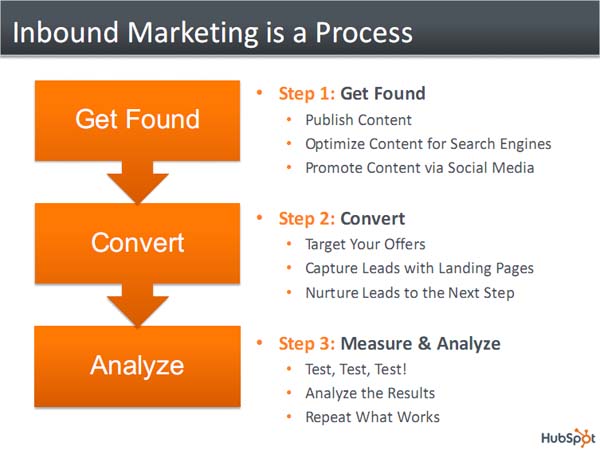
Why You Need These 4 Essential Headline Writing Tips
October 2, 2025
Do You Know Closed Loop Marketing?
October 2, 2025Anyone working in the education industry in Singapore knows the lifeblood of the education business are the students, and it is a very lucrative and highly regarded business too. Considering a student enrolling in a 4-year course that cost $20,000/year in tuition fees, his “customer value” is a whopping $80,000 and that is not surprising! It is why education institutions in Singapore always have the budget to run their yearly marketing campaigns in mass media, talks and Open House events.
Fortunately, such outbound marketing approaches are here to stay as generations of young prospective students want to be on an institution’s premise itself to get a good feel of the academic environment. However, the cost of outbound marketing remains high due to these factors:
* the printing and publication of brochures and prospectus
* high-level manpower usage
* food catering
* advertising, administrative and logistics costs
Moreover, an Open House experience may end up dampened for visitors because the event is too crowded so they do not managed to canvass all the information they need and may have to come back another day…if it does not rain. Face-to-face interactions are beneficial especially for young visitors to get a good impression but for an institution to recall “it’s that time of the year” for annual marketing is not really strategically optimal and is very expensive.
When institutions can appreciate that young people are most active online, they will realize that they are best placed to complement their current marketing efforts with Inbound Marketing by generating leads through their websites at much cheaper cost.
The no. 1 goal of education institutions is to enrol students, and the schools that succeed today are leveraging on content marketing, blogs, SEO and social media to promote their courses, attract the relevant website visitors or leads and engage them effectively.

There are 3 steps to Inbound Marketing for the education business in Singapore:
1) Get Found
2) Convert
3) Analyze
Step 1: Get Found

Getting found online starts with publishing remarkable content. Institutions most likely have done the basics of publishing their course details on web pages or convert their prospectus into downloadable PDF files, but going Inbound entails year-round marketing consistency. Content can also reflect up-to-date industrial development news about a subject, internal events and programs, exam preparation tips or even accommodation matters. In fact, content should be written not just to target students but also their parents, alumni and other types of stakeholders. The tremendous amount of content will keep the website busy and fresh, engage as many interested parties as possible and help boost the number of indexed and ranked pages in the search engines.
Content can take many forms like blog posts, articles, videos, ebooks, guides, whitepapers, social media posts, emails, infographics, checklists, newsletters and surveys. Content publishing should be a campus-wide collective effort. Besides the full-time administrator, writers and bloggers can include academic staff, student bodies and other volunteers based on an open contribution policy. To reach out to prospective students, think about what makes your school special, and make sure the content tells a story about why they should take an interest in your school. Here’s a hint: It is because they can be safe on campus, be well educated and ultimately land a job. If your content consistently focuses on these concerns, you will win over them. What your contributors write reflects on their wealth of knowledge and expertise and shows that the institution as a whole is staying relevant with the times.
Your prospective students are online using social media sites like Facebook and Twitter. You need to get involved in these existing communities and build relationships and share content and information.
Step 2: Convert

Lead conversion is a thing that some academic websites I had come across do not perform very well, which betrays a certain lack of digital marketing experience on the part of web designers or IT staff. PDF files like prospectuses are left “in the open” without visitors having to fill in their names and e-mail addresses in a form to access them. Publishing subscription or opt-in pages within the website would be a huge inbound marketing improvement, because such pages allows you to convert anonymous traffic into leads with names, contact info, and interests.
From this point onwards, lead nurturing through email automation helps to inform the leads of all the details they need to make a better enrolment decision. Wouldn’t that be the same information they could get at Open House, except that they are now receiving it through email at any time they subscribe for it? The process is automated, cheaper and helps prospects to digest the information better at their own pace. The emails can state a ready hotline number that prospects can call to make inquiries about academic matters. Finding new pathways of engagement channels fosters relationship building with prospects over time and brings them closer to the enrolment phase.
Step 3: Analyze

One of the most integral component of Inbound Marketing is analytics, and it is crucial for measuring the overall effectiveness of your marketing campaigns and understanding where the majority of the traffic is coming from and going to. Statistics to track include daily opt-ins, social media connections, blog subscription, page views, time on site, traffic sources etc. and more importantly, the percentage of leads that ultimately enrols as students after going through the whole lead nurturing process.
Knowing the hard numbers will enable you, the education Inbound marketer, to better decide which non-performing marketing strategies to filter out, the best traffic sources and the most popular downloads and courses viewed online, then you will be able to streamline your marketing efforts for better conversion at lesser cost.
This is just one example of Inbound marketing, and there are many ways and countless reasons to plan an inbound marketing strategy, and hopefully, I’ve helped you understand a little more about how it works. If you have an education site which you like us to review and discover room for Inbound improvement, click the graphic below to start your FREE website evaluation offer!
{{cta(‘9aa76e4b-a2ce-405e-8b24-1c95bba170db’,’justifycenter’)}}


